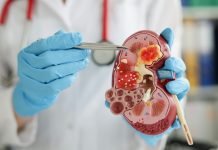
First Delta, then Omicron. The latest COVID variants have spread like wildfire across the globe in recent months, leading many scientists to wonder when the next variant will appear.
Now, scientists may be one step closer to making that determination.
In a new study from the University of Missouri, researchers found at least four “cryptic” variants of SARS-CoV-2, the virus that causes COVID-19, in samples of wastewater from New York City’s public sewer system.
The team believes the results suggest the “cryptic” mutations they identified in New York City could be linked to possible animal origins.
While these origins have not been verified yet, they believe one possible source could be the rats that frequent New York City’s sewer system.
According to the Centers for Disease Control and Prevention (CDC), viruses such as SARS-CoV-2 can continually evolve by acquiring mutations.
Variants, such as delta or Omicron, may contain one or more mutations within their viral sequence that help to distinguish themselves from other variants of SARS-CoV-2.
The team says wastewater surveillance is really important in the context of community-based, public health measures where we have the ability to communicate health information at a level where decisions, practices and interventions can be implemented.
Wastewater surveillance is fast, inexpensive and unbiased, and for that reason it has the ability to be implemented depending on resource availability in a variety of contexts, especially in areas with limited resources such as low testing and vaccine availability.
If you care about COVID, please read studies about the cause of severe disease and death in COVID-19, and drug combo that could effectively fight COVID-19.
For more information about COVID, please see recent studies about a novel vaccine method to prevent COVID-19 infection, and results showing that BMI number linked to risks of death and ICU stay in COVID-19.
The study is published in Nature Communications and was conducted by Marc Johnson et al.
Copyright © 2022 Knowridge Science Report. All rights reserved.




